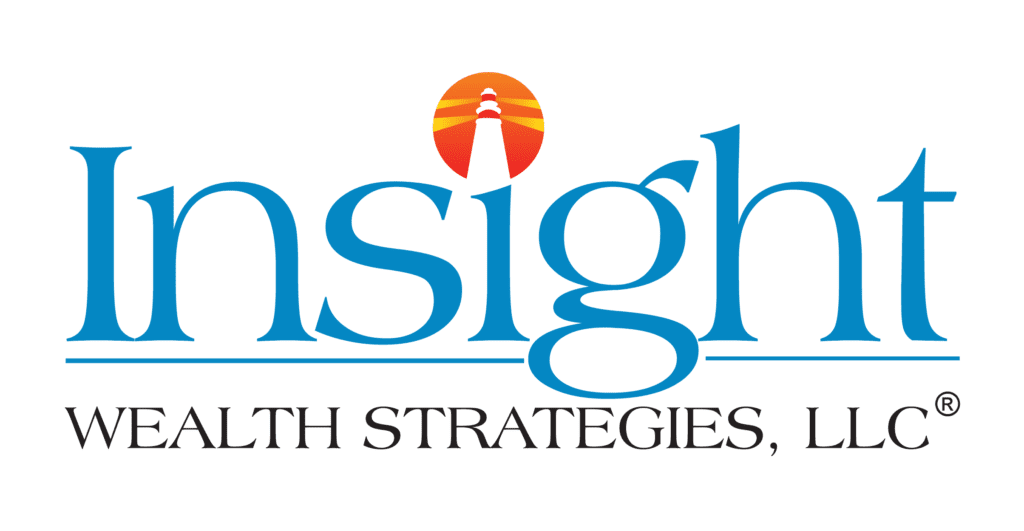Embracing Financial Wellness in Retirement
As we transition into the golden years of our lives, it becomes increasingly important to adopt a comprehensive approach to financial planning. In this blog, we’ll explore innovative and holistic strategies that go beyond conventional financial advice, unraveling the principles of financial well-being and guiding you on the path to a rewarding post-work life with significant financial wellness benefits.
Redefining Financial Wellness for Today's Retirees
The concept of financial wellbeing in retirement has evolved, adapting to the changing landscape of modern retirement lifestyles and expectations. In the past, retirement planning services predominantly focused on accumulating savings, but today’s retirees seek a more nuanced approach. Financial wellness now encompasses a broader spectrum, taking into account the various aspects of post-work life, by enhancing one’s financial situation through effective wealth management. For residents in Texas, our wealth management Houston office provides local expertise to help achieve your retirement and financial freedom goals.
Many retirees are no longer bound by traditional notions of aging. Instead, they are embracing active lifestyles, seeking fulfillment beyond financial security. In this shift, financial wellness takes on a holistic meaning, extending beyond the scope of savings. It involves skillfully managing expenses, navigating healthcare costs, and, most importantly, maintaining a lifestyle that aligns with one’s desires. Our wealth management San Ramon office specializes in crafting strategies tailored to making that a reality for you.
Integrating Health and Wealth in Retirement Planning
Recognizing the relationship between health and wealth can be pivotal for a comprehensive and sustainable retirement strategy.
Healthcare costs are an undeniable reality in retirement and addressing them head-on is a cornerstone of a good financial wellness program. As we age, the need for medical care often increases, making it necessary to incorporate health considerations into the broader financial picture. A robust retirement plan should not only safeguard your wealth but also prepare you for potential healthcare expenses that may arise.
Planning for Long-Term Healthcare Needs:
Anticipating and funding long-term care is an important aspect of a financial wellness plan for retirement. As we age, the possibility of needing extended care increases, making it imperative to explore various approaches to address this potential part of retirement life.
- Insurance Options: One key strategy is considering long-term care insurance. This specialized insurance is designed to cover the costs associated with extended healthcare needs, such as nursing home care, assisted living, or in-home care. It provides a financial safety net, helping to protect your assets and alleviate the burden of significant healthcare expenses.
- Self-Funding Approaches: Alternatively, some individuals choose self-funding approaches. This may involve setting aside a dedicated portion of savings specifically for potential long-term care needs. While this approach grants flexibility and control, it requires meticulous financial planning to ensure adequate funds are available.
- Hybrid Products: Hybrid insurance products that combine life insurance with long-term care benefits have gained popularity. These products provide a death benefit to beneficiaries if long-term care is not needed, offering a degree of financial flexibility.
- Evaluating Costs and Benefits: When evaluating long-term care solutions, it’s crucial to weigh the costs and benefits of each option. Consider factors such as the level of coverage, waiting periods, and any exclusions. Assessing the overall impact on your personal finances, alongside potential tax implications, will help you make informed decisions aligned with your specific needs and preferences.
By integrating these strategies into your financial wellness plan, you can proactively address the potential need for long-term care, ensuring that your retirement is not only financially secure but also equipped to handle the complexities of evolving healthcare needs.
The Role of HSAs in Retirement:
Health Savings Accounts (HSAs) are a versatile tool, not just for managing current healthcare expenses but also for enhancing your retirement strategy. Understanding the dual benefits of tax advantages and investment potential makes HSAs a valuable component of a financial wellness program.
- Tax Advantages: HSAs offer a unique triple-tax advantage. Contributions are tax-deductible, reducing your taxable income in the year you contribute. The funds within the HSA grow tax-free, allowing your investments to potentially compound over time. Importantly, withdrawals for qualified medical expenses are tax-free, providing a tax-efficient way to cover healthcare costs.
- Investment Potential: Unlike many traditional savings accounts, HSAs often allow you to invest your contributions in a range of investment options. This feature provides an opportunity for your HSA to grow beyond the typical interest earned in a regular savings account. Leveraging the investment potential of your HSA can boost its value over the course of your retirement saving.
- Maximizing Contributions: To make the most of HSAs, consider maximizing your contributions. The annual contribution limits are set by the IRS, and contributing the maximum allowable amount each year can help build a substantial fund for future healthcare needs. It’s a proactive way to prepare for potential medical expenses in retirement while capitalizing on the tax benefits.
- Using Funds in Retirement: In retirement, HSAs can be a valuable resource for covering qualified medical expenses. By using HSA funds for healthcare costs, you continue to enjoy the tax-free withdrawals, ensuring that your healthcare expenditures don’t unduly impact your retirement income.
In essence, incorporating HSAs into your retirement planning not only provides a tax-efficient strategy for managing healthcare costs but also presents an opportunity to build a supplemental source of income through strategic investments.
Creating a Sustainable Retirement Income Strategy
As you begin the journey of retirement, you will want to create a sustainable withdrawal strategy from your retirement accounts. This strategy not only helps with financial longevity but also provides a sense of security, allowing you to enjoy your retirement years without the constant worry of outliving your resources or facing unnecessary financial stress.
- Importance of Sustainability: The traditional rule of thumb for retirement withdrawals often centered around a fixed percentage, commonly 4% annually. However, as retirees are living longer and market conditions fluctuate, it can be important to adopt a more nuanced approach. A sustainable withdrawal strategy takes into account various factors, to ensure that your income remains steady and can adapt to changing circumstances, supporting your financial freedom.
- New Perspectives on Withdrawal Rates: Contemporary perspectives on withdrawal rates recognize the need for flexibility. Rather than adhering strictly to a predetermined percentage, consider adjusting your withdrawals based on current market conditions and your personal risk tolerance. This approach helps in managing money more efficiently, enabling you to weather economic fluctuations and make informed decisions that align with your financial goals, reducing the likelihood of encountering a financial challenge.
- Assessing Personal Risk Tolerance: Personal risk tolerance varies, and your comfort level with market fluctuations should inform your withdrawal strategy. Understanding how much risk you are willing to bear can guide decisions on the pace and amount of withdrawals. Balancing the desire for a comfortable lifestyle in retirement with the need to preserve your financial health requires a thoughtful evaluation of your risk tolerance.
By embracing a sustainable withdrawal strategy that considers both current market conditions and personal risk tolerance, you set the stage for a more resilient retirement income plan.
Utilizing Annuities for Steady Income:
Annuities play an important role in providing a reliable income stream during retirement. They offer a unique advantage by transforming a lump sum into a guaranteed series of payments, creating a stable foundation for your retirement income.
Different types of annuities cater to different needs. Fixed annuities provide a consistent payout, shielding you from market fluctuations. Variable annuities, on the other hand, offer the potential for higher returns by tying payments to market performance. Incorporating annuities into a diversified retirement income plan involves a strategic balance, considering factors such as risk tolerance and income goals. By leveraging the strengths of various annuity types, you can improve the predictability and sustainability of your retirement income, helping to ensure a more secure financial situation for your future.
The Psychological Aspect of Financial Wellness
Understanding the link between financial wellness and overall well-being is essential as we look at the psychological landscape of retirement. Financial security is a cornerstone, influencing not only our economic stability but also our mental and emotional health. A sense of financial well-being fosters peace of mind, reduces financial stress, and contributes significantly to a fulfilling retirement experience.
As retirees transition into this new phase of life, emotional adjustments are inevitable. Maintaining a positive financial mindset involves embracing the opportunities retirement presents, focusing on personal growth, and finding purpose beyond the traditional workforce. Seeking support from loved ones, staying engaged in meaningful activities, and approaching financial challenges with resilience contribute to a holistic approach to well-being during retirement.
Navigating the Emotional Transition to Retirement:
The emotional transition to retirement is a journey that requires thoughtful strategies for adjustment. One key aspect involves finding new purposes beyond the professional sphere. Engaging in activities that align with personal passions, volunteering, or pursuing lifelong interests can bring a sense of fulfillment and purpose.
Staying mentally engaged post-retirement is equally vital. Embracing learning, whether through classes, workshops, or hobbies, stimulates cognitive function and contributes to a sense of vitality. Establishing a routine that incorporates social interactions and maintaining connections with friends and family helps combat feelings of isolation. By proactively shaping your post-retirement life with purpose and mental engagement, you pave the way for a fulfilling and emotionally satisfying retirement experience.
Building a Support Network for Financial Decisions:
A diverse support system that includes financial advisors, family, and peer groups can serve as a valuable resource, providing perspectives and expertise that contribute to well-rounded decision-making.
Financial advisors bring specialized knowledge to the table, offering insights into investment strategies, risk management, and overall financial planning. Family members, with their intimate understanding of personal values and goals, contribute emotional support and assist in aligning financial decisions with broader life aspirations. Peer groups create a community where shared experiences foster collective wisdom, helping retirees navigate common challenges.
In conclusion, the journey towards financial wellness in retirement can be a complex endeavor. From redefining financial wellness to integrating health and wealth, utilizing innovative withdrawal strategies, and building a support network, we’ve covered a spectrum of approaches aimed at fostering a resilient and fulfilling retirement.
A holistic view of financial wellness goes beyond numbers, encompassing health, lifestyle, and emotional well-being. Recognizing the interconnectedness of these elements is essential for crafting a qualified retirement plan that not only secures your financial future but also enhances your overall quality of life.
Remember, your retirement is not just a destination but a dynamic chapter of life to be lived to the fullest. Embrace the opportunities, stay adaptable, and cherish the moments that financial wellness can provide in this exciting new phase. Here’s to a rewarding and secure retirement journey tailored to your individual dreams and goals!
Reviewed by,

Chad Seegers, CRPC®
Chad began his career with Sagemark Consulting in 2005 and then became a Select member of Sagemark’s Private Wealth Services which operated as a national resource for financial planners focusing on Advanced Strategies in the High Net Worth marketplace. Chad then began his partnership with Insight Wealth Strategies in 2013 focused on retirement planning primarily with Oil and Gas employees and executives. His primary areas of expertise are retirement, estate, and investment strategies as he serves as Investment Strategist for the financial planning team.
Insight Wealth Strategies, LLC is a Registered Investment Adviser. Advisory services are only offered to clients or prospective clients where Insight Wealth Strategies, LLC and its representatives are properly licensed or exempt from licensure. Past performance is no guarantee of future returns. Investing involves risk and possible loss of principal capital. No advice may be rendered by Insight Wealth Strategies, LLC unless a client service agreement is in place.
Insight Wealth Strategies, LLC (IWS) and its affiliates do not provide tax, legal or accounting advice. This material has been prepared for informational purposes only, and is not intended to provide, and should not be relied on for, tax, legal or accounting advice. You should consult your own tax, legal and accounting advisors before engaging in any transaction.

